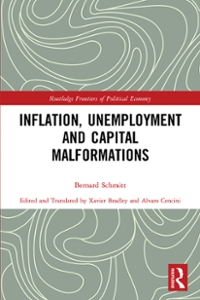Question
Assume the UK market for panther chameleons is perfectly competitive. Table 1 shows fictional data about consumer Wendy's marginal utility and willingness to pay for
Assume the UK market for panther chameleons is perfectly competitive. Table 1 shows fictional data about consumer Wendy's marginal utility and willingness to pay for different quantities of panther chameleons. Table 2 shows fictional data about the costs that producer Alex incurs if breeding different numbers of panther chameleons.
Table 1:Consumer Wendy's marginal utility and willingness to pay for panther chameleons
| Number of chameleons | Willingness to pay for the last added panther chameleon () | Marginal utility of the last added panther chameleon (utils) |
| 2 | 200 | 2000 |
| 3 | 100 | 1000 |
| 4 | 50 | 500 |
| 5 | 25 | 250 |
| 6 | 12 | 120 |
| 7 | 6 | 60 |
| 8 | 3 | 30 |
| 9 | 2 | 20 |
Note: Wendy is willing to pay 10 pence (0.1) for each extra util of utility.
Table 2:Producer Alex's daily costs of breeding panther chameleons
| Number of panther chameleons | Total cost () | Marginal cost () |
| 10 | 118 | - |
| 11 | 130 | 12 |
| 12 | 150 | 20 |
| 13 | 177 | 27 |
| 14 | 220 | 43 |
| 15 | 286 | |
| 16 | 370 | |
| 17 | 480 |
- Using the data in Table 1, and the module materials, find the number of panther chameleons Wendy will demand if:
- a.the market price is 24
- b.the market price is 50
- c.the market price is 100.
Include in each of your answers an explanation of how you arrived at your figures.
2. The points you calculated in your answer to Question 1 are part of Wendy's demand curve for chameleons. Plot these points and briefly describe what they suggest about the relationship between Wendy's demand and the market price.
3. Complete Table 2 by calculating the missing values for the marginal cost Alex incurs when producing the last of each of the numbers of chameleons in the table. Explain how you arrived at your figures.
4. Using the data in the completed Table 2 and the module materials, find the number of chameleons Alex will supply if:
- a.the market price is 24
- b.the market price is 50
- c.the market price is 100.
Include in each of your answers an explanation of how you arrived at your figures.
5.The points you calculated in your answer to Question 4 are part of Alex's supply curve for chameleons. Plot these points and briefly describe what they suggest about the relationship between Alex's supply and the market price.
6. Previous questions required you to calculate points on an individual demand curve and on an individual firm's supply curve. Describe what the market demand and the market supply curves for chameleons in the UK would look like, and how these could be calculated.
Step by Step Solution
There are 3 Steps involved in it
Step: 1

Get Instant Access to Expert-Tailored Solutions
See step-by-step solutions with expert insights and AI powered tools for academic success
Step: 2

Step: 3

Ace Your Homework with AI
Get the answers you need in no time with our AI-driven, step-by-step assistance
Get Started


